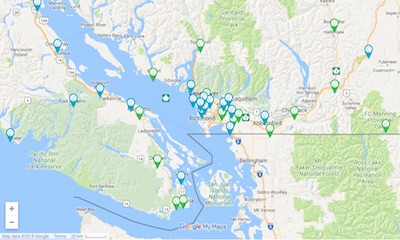BC Hydro Fast Charging Stations Connecting BC East to West

July 30, 2018
BC Hydro has completed the second phase of its electric vehicle fast charging network, allowing drivers to travel across BC from the Alberta border to Tofino. The next phase will connect drivers north.
The second phase includes 28 new stations, in addition to the 30 that were completed in 2016. There are 13 new stations in the Lower Mainland and two new stations at the Britton Creek rest area on the Coquihalla Highway, allowing drivers to quickly charge up before heading to the Southern Interior or the Kootenays. The stations also connect drivers from Horseshoe Bay to the west coast of Vancouver Island.
BC Hydro’s next phase will connect drivers to the north from Kamloops to Prince George, and eventually to Prince Rupert.
“Our government is making zero emission transportation choices more accessible for all British Columbians,” says Energy, Mines and Petroleum Resources Minister Michelle Mungall. “BC already has one of Canada’s largest charging networks.”
BC Hydro’s fast charging network can charge an electric vehicle’s battery to 80% in 30 minutes or less. The network is designed to provide drivers with charging options when they need them, helping reduce the range anxiety many drivers feel about long road trips.
“Electric vehicles are a great option for British Columbians looking to reduce their impact on the environment because we generate 98 per cent clean electricity,” says Chris O’Riley, BC Hydro President and Chief Operating Officer. “They also help lower their driving costs by around 75%.”

















